Dominated by its gothic cathedral, Reims is much more important to many as the unofficial capital of the Champagne wine region.
Wine glasses aside, this city in north-eastern France has played a central role in the country’s history from its time as a town of the Roman Empire to the modern-day post-war period.
Having welcomed everyone from Joan of Arc to Louis Blériot, the first man to cross the English Channel in a plane, Reims offers visitors attractions at almost every turn.
If you’re wondering how to start your exploration of the city, look no further than the 15 best things to do in Reims.
1. Reims Cathedral
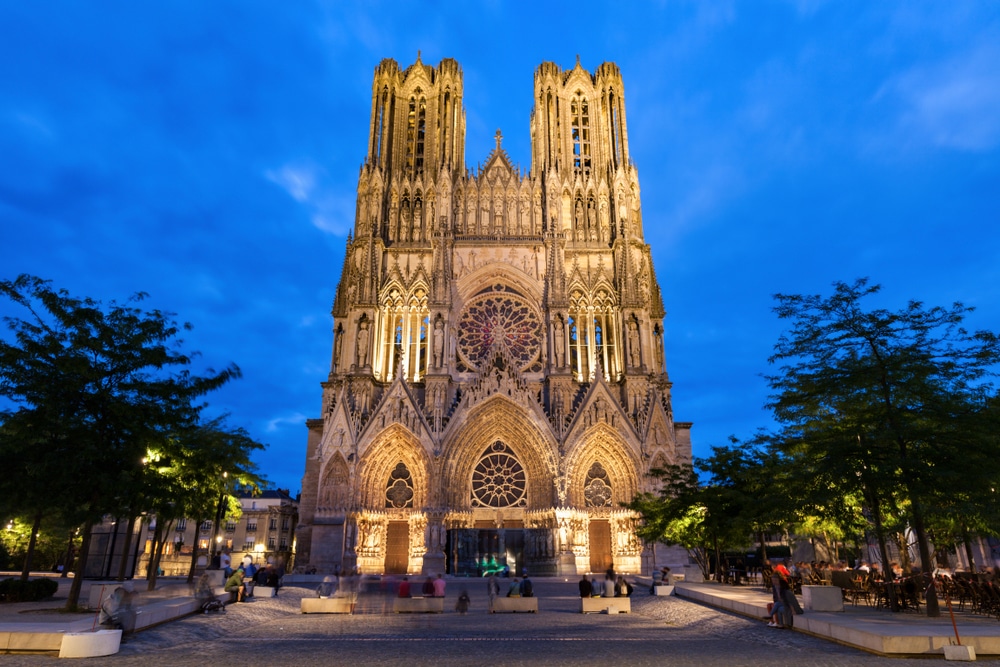 Source: Henryk Sadura / shutterstock
Source: Henryk Sadura / shutterstockA UNESCO World Heritage Site, Reims cathedral has witnessed the coronation of no less than 34 French monarchs over more than a thousand years, with all but seven of its kings crowned here.
With its present construction begun in the year 1211, the cathedral is a fine example of High Gothic architecture.
Its 38-metre high nave is flanked by twin towers 81 metres high, containing bells that ring throughout the day. The largest of which, named Charlotte, weights a massive ten tons and has a diameter of 2.5 metres.
A statue of Joan of Arc stands in front of the cathedral’s impressive main façade, hosting many of the structures 2,300 statues, as a means of marking her liberation of the building and city after it was captured by the English during the Hundred Years War.
Website: https://www.cathedrale-reims.com/
2. Champagne tasting
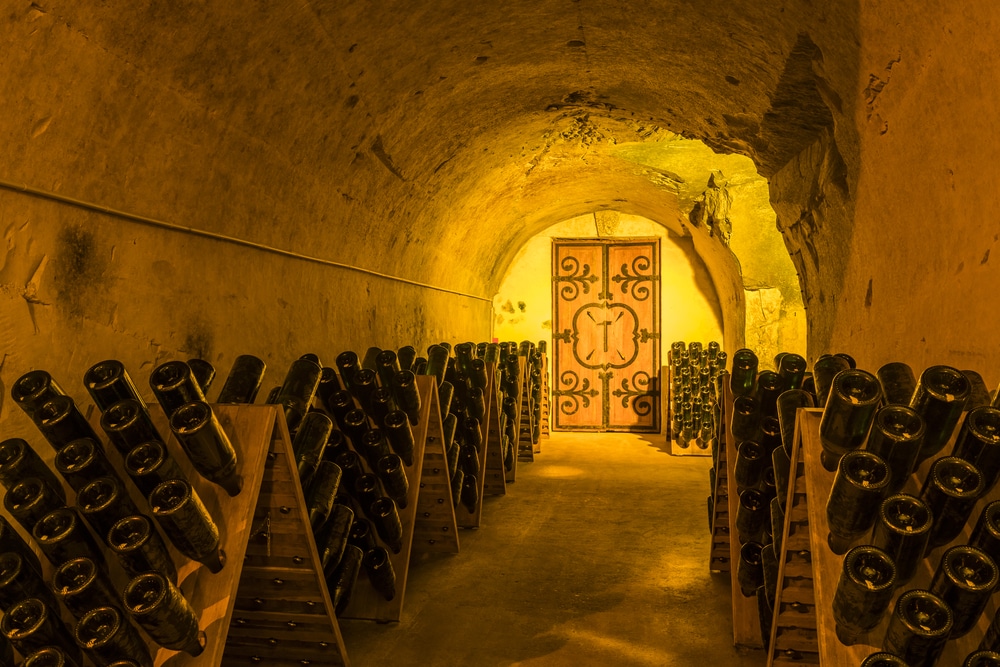 Source: Daan Kloeg / shutterstock
Source: Daan Kloeg / shutterstockAs the unofficial capital of Champagne production, Reims is home to almost all les grandes marques, in other words, the top producers. Household names such as Mumm, Taittinger and Veuve Clicquot stand alongside less well-known brands.
Happily, most producers offer tastings in their cellars, while many also provide more expansive tours of their vineyards, fermentation sheds and stores.
In joining such a tour, you’ll discover what has made champagne the luxury drink it has become, while learning about its rather humble beginnings, including the influence of Dom Pérignon.
Les grandes marques are scattered across the area around Reims, with a handful having a presence in the city itself.
3. Place Royale
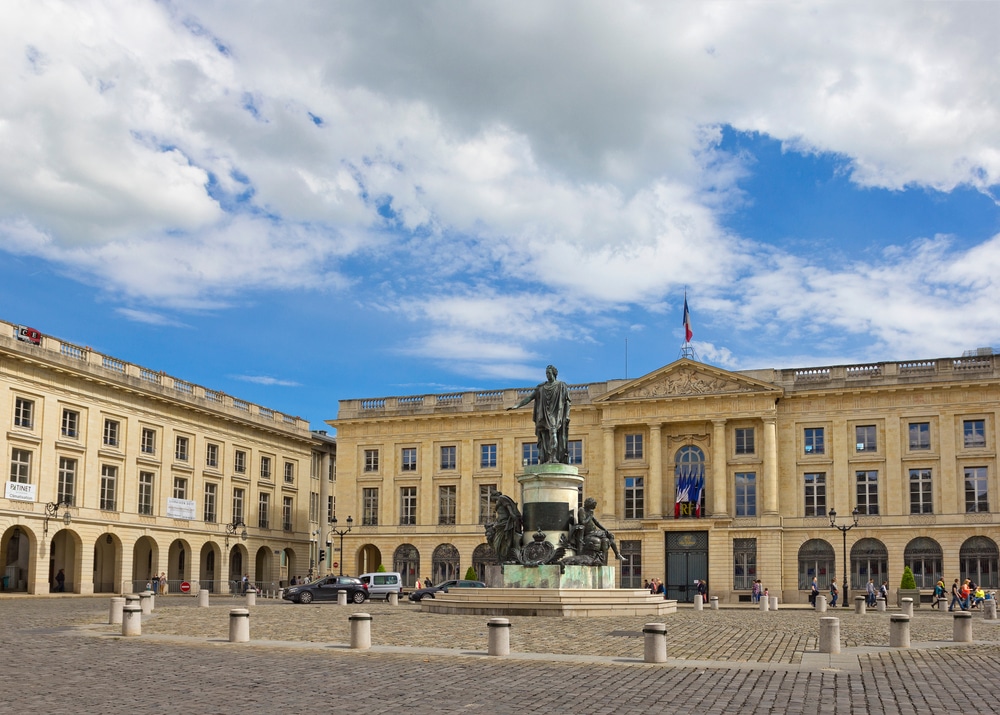 Source: Walencienne / shutterstock
Source: Walencienne / shutterstockSitting at the centre of the city a short distance behind the cathedral, Place Royale is one of Reims’ most important public spaces.
Surviving the French Revolution alongside its bronze statue of Louis XV, it was inaugurated 25 years before the storming of the Bastille. It is edged by buildings that perfectly represent the period with their arched arcade walkways.
While enjoying the square, check out the pediment above the entrance to the sub-prefecture, formerly the Hôtel des Fermes, that represents the city with figures draped in plump bunches of grapes.
4. Museum of the Surrender
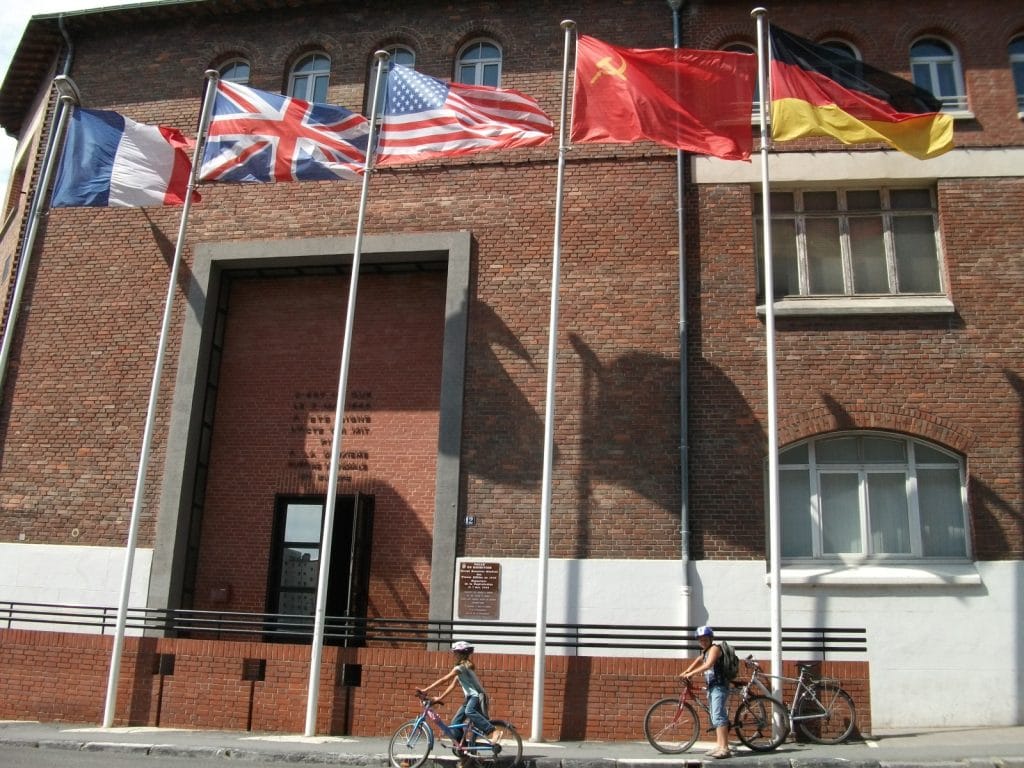 Source: Gérald Garitan / Wikimedia | CC0
Source: Gérald Garitan / Wikimedia | CC0Fittingly located on Rue Franklin Roosevelt, the Museum of the Surrender (Musée de la Reddition) tells the story of the end of the Second World War in Europe.
It was in the map room of the museum building that the Nazi surrender was signed on 7th May 1945, while it acted as the headquarters of General Eisenhower (who went on to become President of the United States).
Exhibits include the map room as it was in May 1945, original uniforms from the period, and artefacts that help bring that troubled period to life as we lose those who lived it for themselves.
5. Porte de Mars
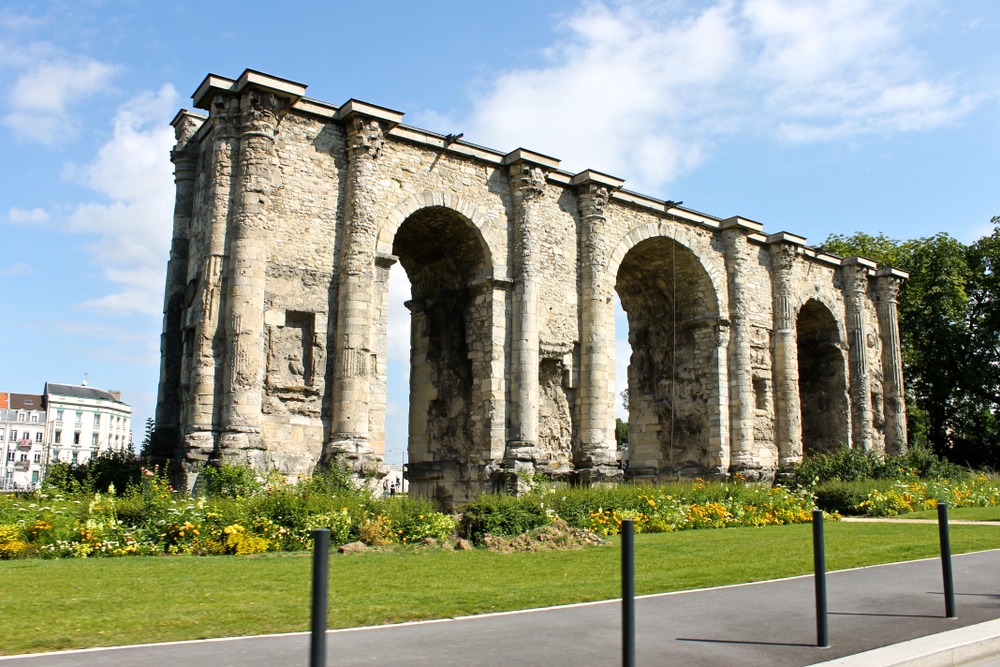 Source: Joaquin Ossorio Castillo / shutterstock
Source: Joaquin Ossorio Castillo / shutterstockThe Porte de Mars is a triumphal gateway on the edge of central Reims that was constructed at the opposite end of Reims’ history, during the city’s Roman period.
The widest archway in the Roman world, the Porte de Mars dates from the third century AD and is the only Roman gateway in the city to still exist.
Named after a Temple to Mars that stood nearby, the gateway became part of an archbishop’s castle in the thirteenth century, before being blocked up as part of the city’s walls until they were taken down in the mid-1800s.
6. Palace of Tau
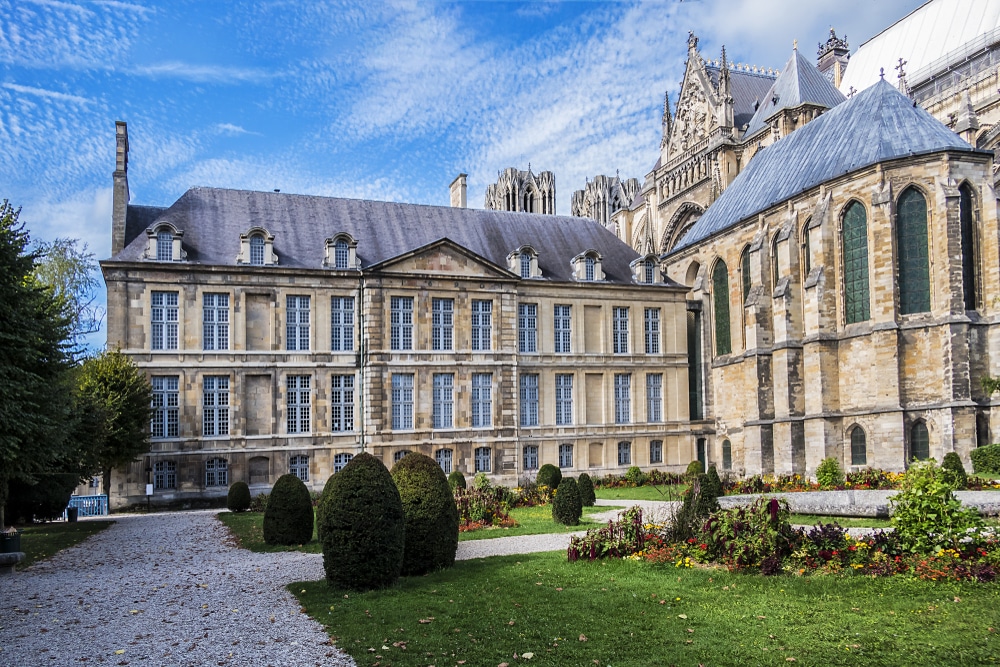 Source: Kiev.Victor / shutterstock
Source: Kiev.Victor / shutterstockThis monumental building forms part of the cathedral’s UNESCO World Heritage Site status, and was primarily used as an archbishop’s residence.
In addition, the palace was where the future monarchs of France stayed immediately before their coronation by the archbishops in the cathedral, and where they celebrated with a feast once crowned.
The oldest section of the palace as it exists today is its chapel, dating to 1207, while the majority was reconstructed in the late fourteenth century onwards.
As well as holding this important historical role, it now also houses the Musée de l’Oeuvre, which has on show some of the fine arts and religious artefacts from the cathedral.
These include medieval tapestries, the Coronation Chalice, and the Reliquary of the Holy Thorn, said to contain a part of Christ’s crown of thorns.
The palace takes its unusual name from its T-shape, being tau in the Greek alphabet.
Website: http://www.palais-du-tau.fr/en/
7. Montagne de Reims Champagne Route
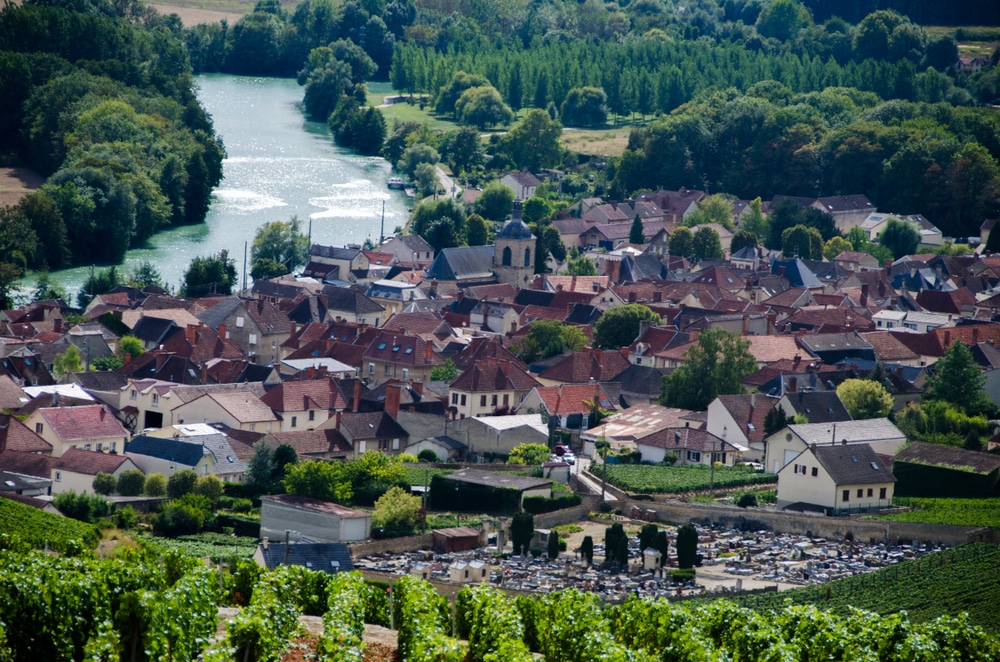 Source: muratozdil / shutterstock
Source: muratozdil / shutterstockWhether or not you’ve had a chance to sample Reims’ champagne offerings already, the Montagne de Reims Champagne Route is a charming way to go about it.
Connecting Reims with Épernay, another important champagne producing town, this 70-kilometre route winds through the region’s vineyards and beside the Montagne de Reims regional park.
The park protects the area’s forested mountains, including the twisted beeches of the 1,000-year-old Faux de Verzy forest.
Those following the route have the opportunity to stop at any number of quaint picturesque villages largely unchanged by time, or consider the effects of the First and Second World Wars on this part of northeast France.
It can be completed on a tour, or as a self-drive adventure.
8. Fort de la Pompelle
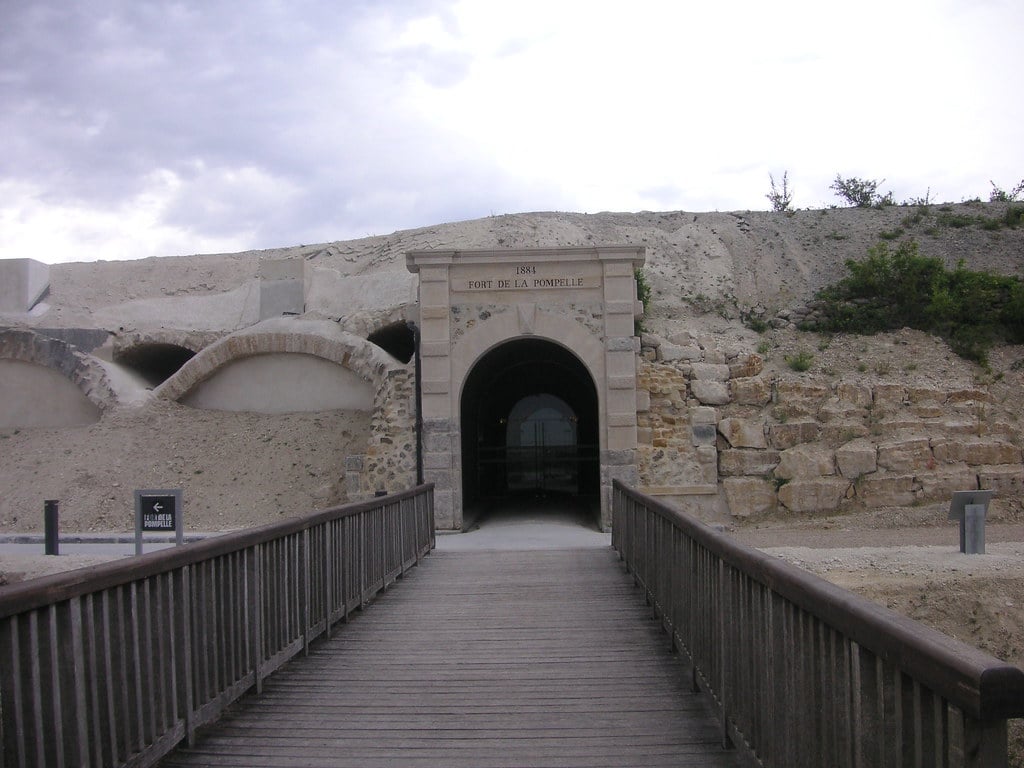 Source: Bartwatching / Flickr | CC BY-ND
Source: Bartwatching / Flickr | CC BY-NDTen kilometres east of Reims, Fort de la Pompelle is one of the city’s later defences, built after the Franco-Prussian War of 1870.
However, the museum that occupies the site today focusses mainly on the fort’s actions during the First World War, when it became one of the city’s most attacked.
Defended by forces including two brigades of men sent by Tsar Nicholas II of Russia, it remains in the semi-ruinous state it was at the end of this conflict.
9. Abbey of Saint-Remi
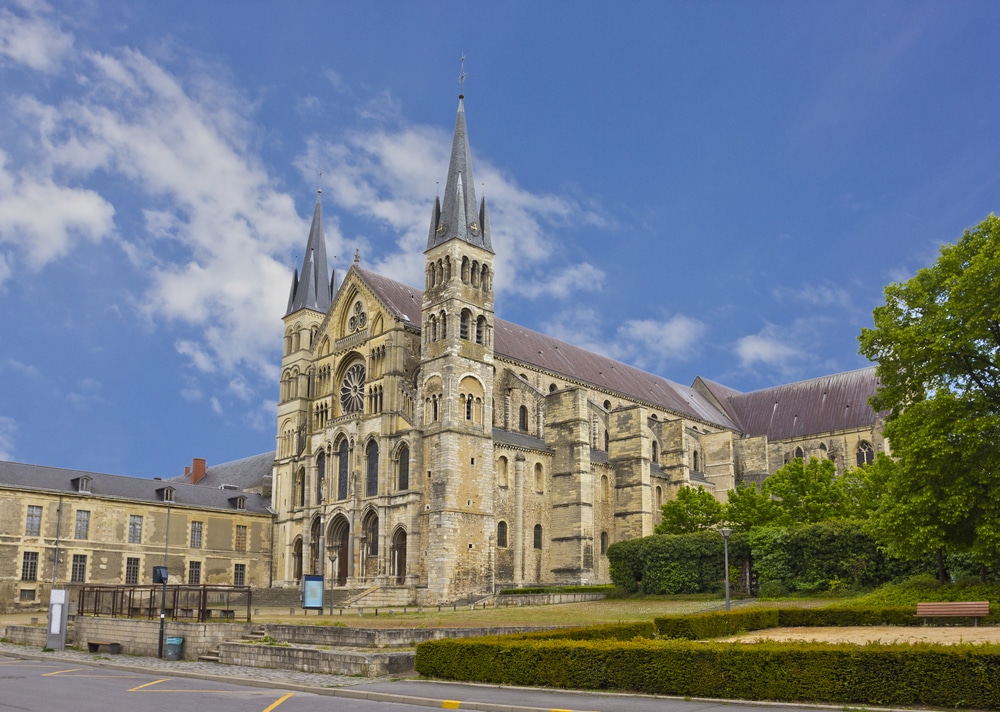 Source: Walencienne / shutterstock
Source: Walencienne / shutterstockForming the third location of Reim’s UNESCO World Heritage Site alongside the cathedral and Palace of Tau, the Abbey of Saint-Remi is now better known as the Musée Saint-Remi.
It was the home of the relics of Saint Remigius (Saint-Remi), who converted Clovis king of the Franks to Christianity in 496 AD, for many centuries. Today, it contains a variety of important artworks in its vaulted halls.
These include tapestries, jewellery and medieval sculpture, with other sections dedicated to the pre-Roman Gallic period, and also the stone age before it.
10. Rue de Vesle
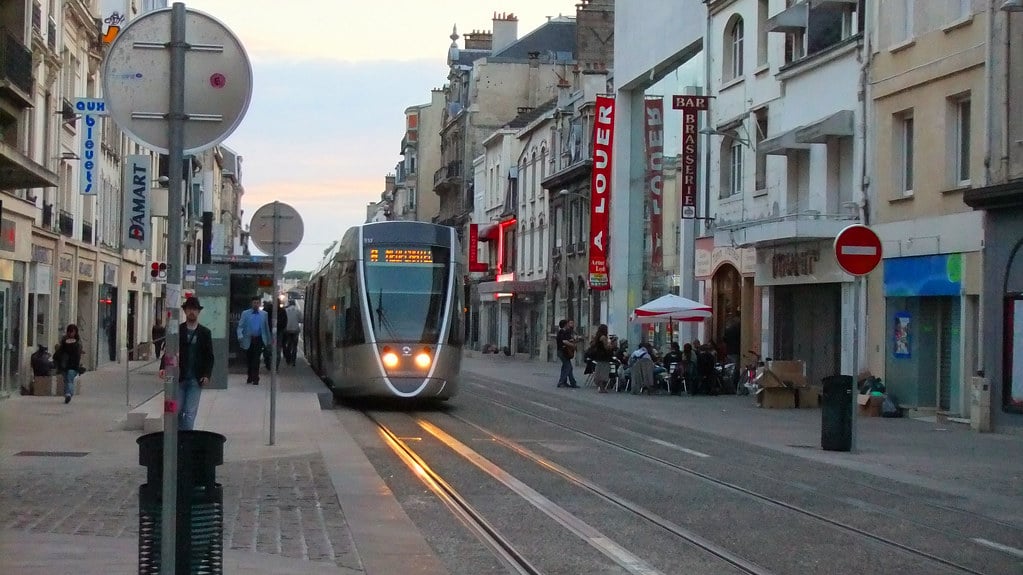 Source: Keith Laverack / Flickr | CC BY-ND
Source: Keith Laverack / Flickr | CC BY-NDThe ruler-straight 700-metre long Rue de Vesle is the main commercial street in Reims. Limited to trams and pedestrians, it links the city’s heart with the River Vesle, from where it gets its name.
Its history dates back to the Roman city, following an almost identical route to the decumanus maximus roadway. More recently, it has become most associated with the art deco movement of the 1920s, having suffered significant damage during the First World War.
Of its art deco structures, the Kodak building with its geometric corner site, and the stylish ironwork of the Galeries Lafayette department store are worth noting, in between shopping for souvenirs or stopping at a café.
11. Reims Opera
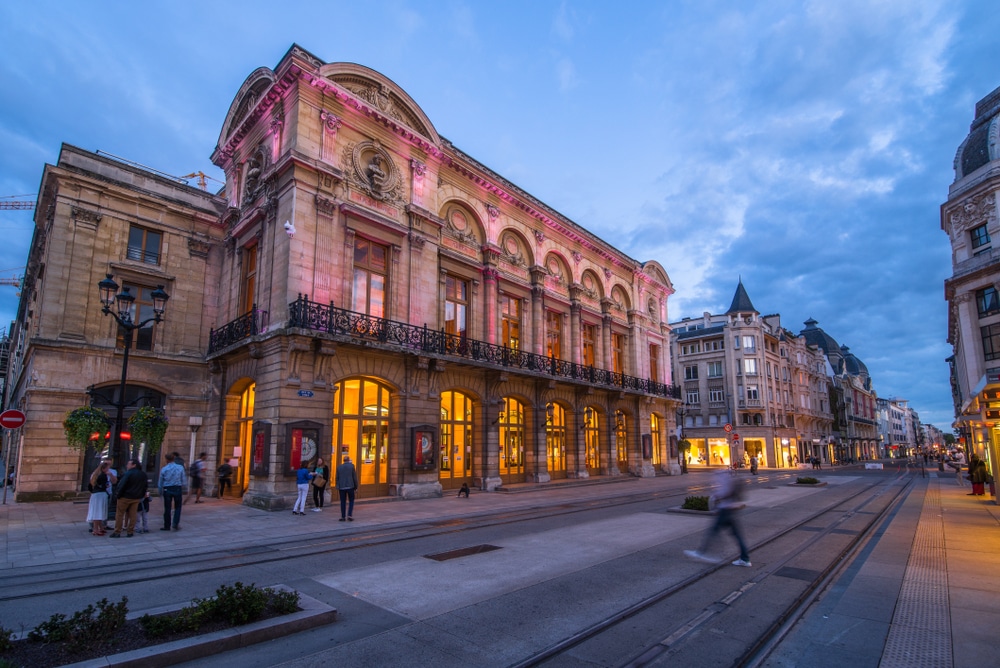 Source: Sergii Zinko / shutterstock
Source: Sergii Zinko / shutterstockOpened in 1873 at the height of the opera craze, Reims’ opera house has an Italianate neoclassical exterior facing onto Rue de Vesle, but an interior that wholeheartedly embraces the art deco style of 50 years after it was initially constructed.
Said to have been inspired by the Opera Garnier in Paris, it continues in its remit of bringing opera and other artistic performances to the people of Reims.
Its sumptuous surrounds include a shield chandelier with a diameter of 7.5 metres, surrounded by a finely painted mythological scene of the ‘arts being born of the feast of Bacchus’ – who certainly knew how to have a good time himself.
Website: https://www.operadereims.com/
12. Troyes
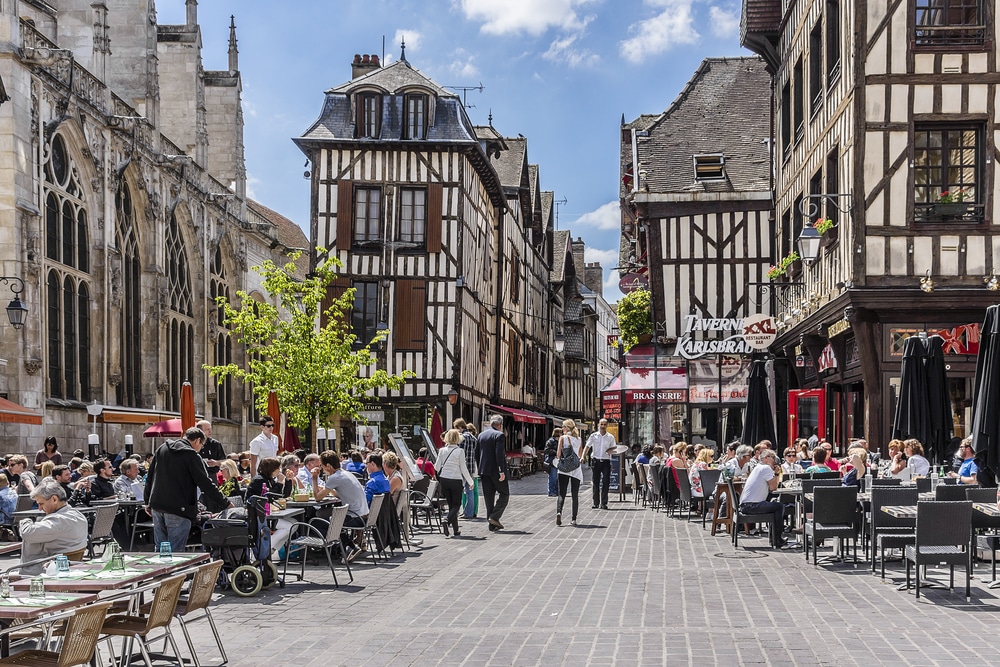 Source: Kiev.Victor / shutterstock
Source: Kiev.Victor / shutterstockThe elegant town of Troyes lies roughly 1.5 hours south of Reims, and forms a triangle between it and the French capital.
Its historic quarter is full of medieval atmosphere due to some lovely multistorey half-timbered buildings and hotels particuliers mansions that have managed to survive the centuries.
Birthplace of the modern legends surrounding the Holy Grail, the town avoided much of the destruction of the world wars, with the result that Troyes has some important historic churches.
These include the cathedral of Saints Peter and Paul, where the Treaty of Troyes was signed between England’s Henry V and Frances Charles VI, giving the former the crown, though this never came to be.
13. Ferme de Navarin
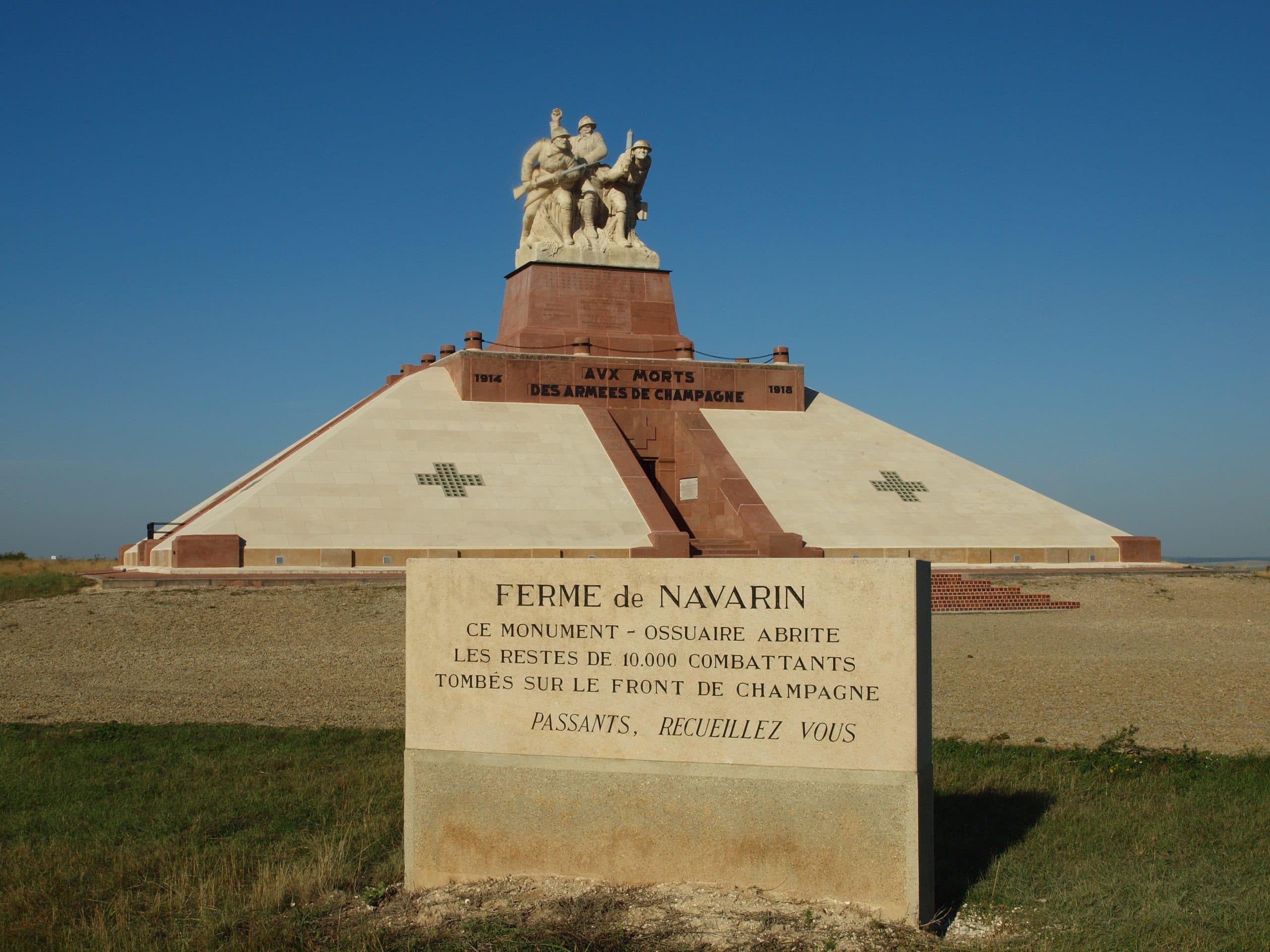 Source: fr.wikipedia.org | CC0
Source: fr.wikipedia.org | CC0The Ferme de Navarin is a large monument and ossuary to the soldiers who died on the front in the Champagne region during the First World War, and contains the bones of 10,000 of them who were largely unidentifiable after battles here in 1915 onwards.
It consists of a low square-bottomed pyramid of pale stone lined with red sandstone and topped with a large sculpture depicting the men of the front.
Its hilltop location gives it a commanding view over the surrounding terrain, and makes for a peaceful if solemn addition to any visit to Reims.
The Ferme de Navarin is roughly 45 kilometres east of the city.
14. Basilica of Saint-Remi
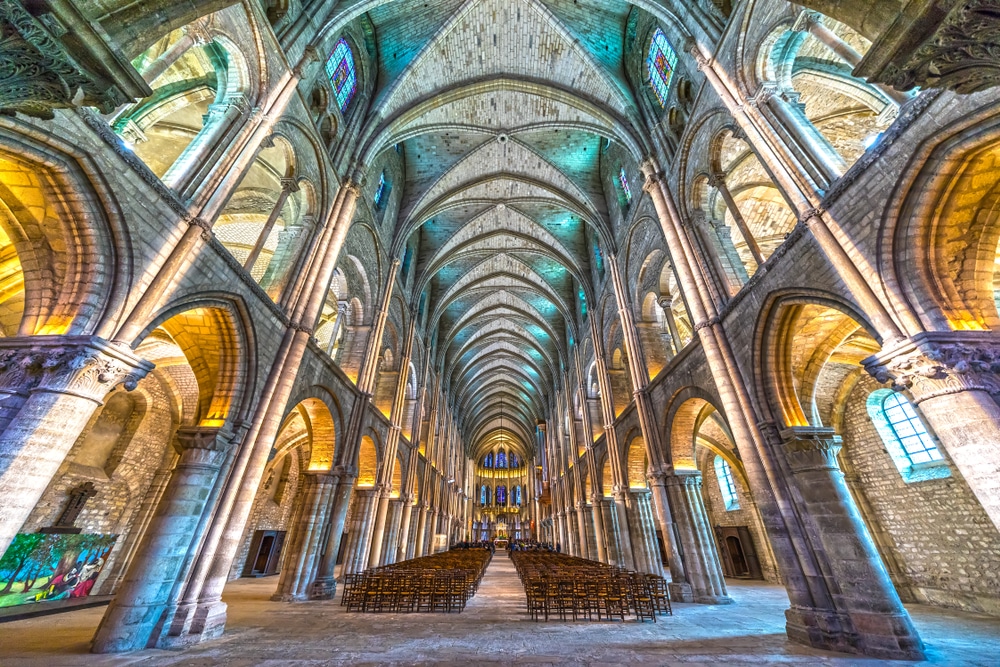 Source: Luciano Mortula - LGM / shutterstock
Source: Luciano Mortula - LGM / shutterstockNot to be mixed up with the Abbey of Saint-Remi which it stands beside, the Basilica of Saint-Remi remains a place of worship to this day.
An impressive addition to the Reims skyline since the early Middle Ages, it’s two slender towers mark an interior well worth investigation.
Consecrated by Pope Leo IX in 1049, the basilica also holds the unmarked graves of several significant figures in the country’s history, including the brother of Charlemagne, and Louis IV, king of Western Francia.
15. Halles du Boulingrin
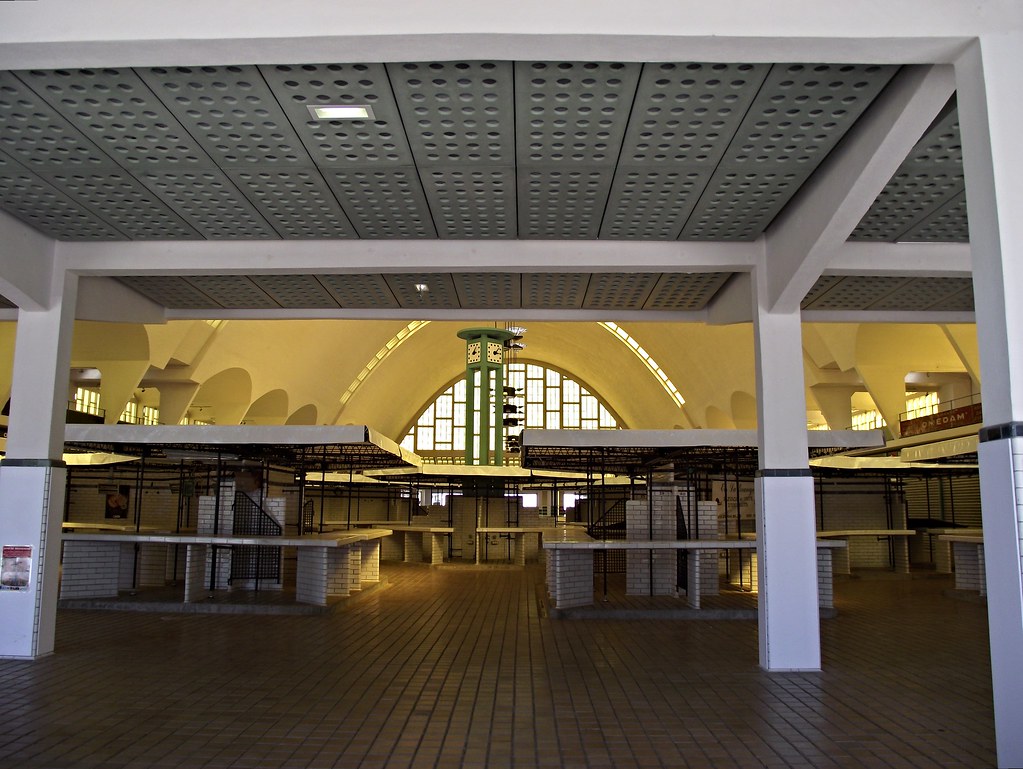 Source: corno.fulgur75 / Flickr | CC BY
Source: corno.fulgur75 / Flickr | CC BYWhy not round of a visit to Reims by tasting some of its local, non-Champagne, produce? The Halles du Boulingrin has been the place to head for such delicacies since 1929.
Located on Rue de Mars, its arched glass-fronted art deco edifice rises from its surrounded halls like a church to the region’s farmers.
In addition to its thriving food stalls, the market also acts as a backdrop for various cultural events and temporary exhibitions throughout the year, so keep your eyes peeled.
Website: http://marcheduboulingrin.fr/